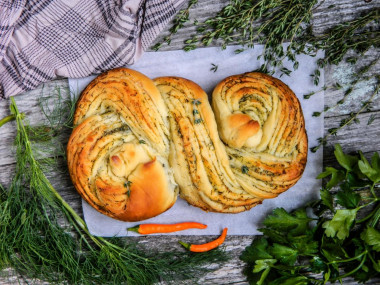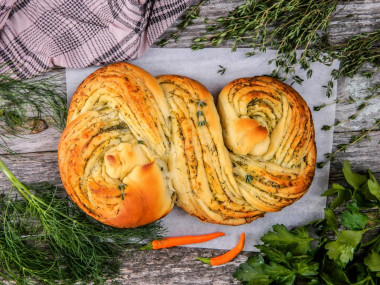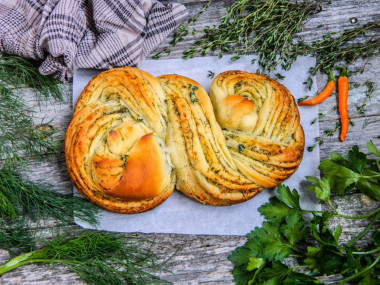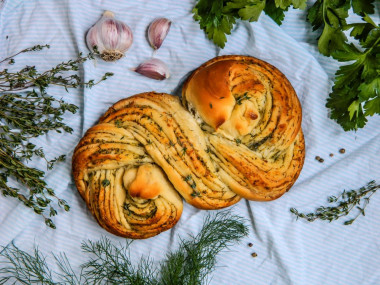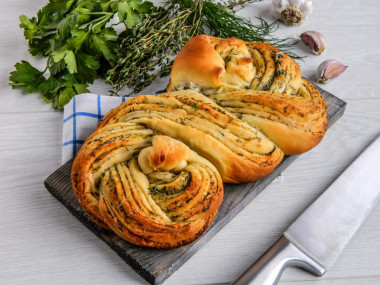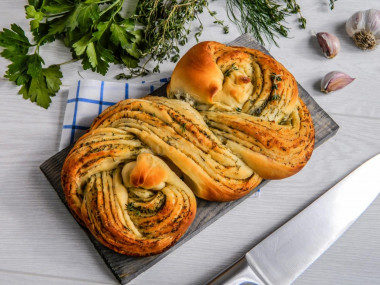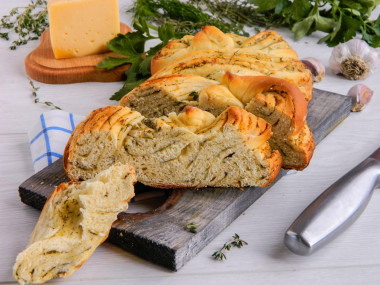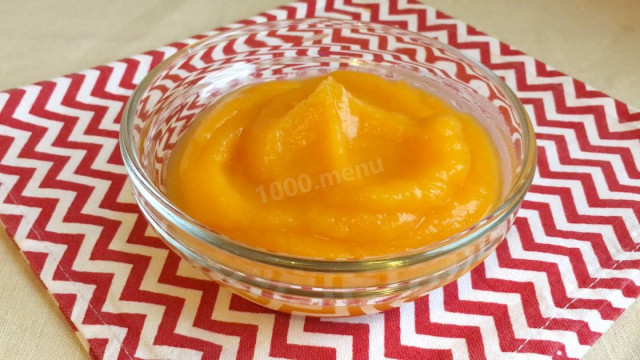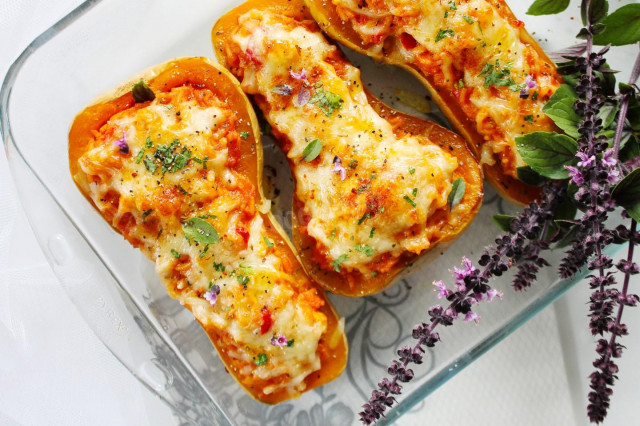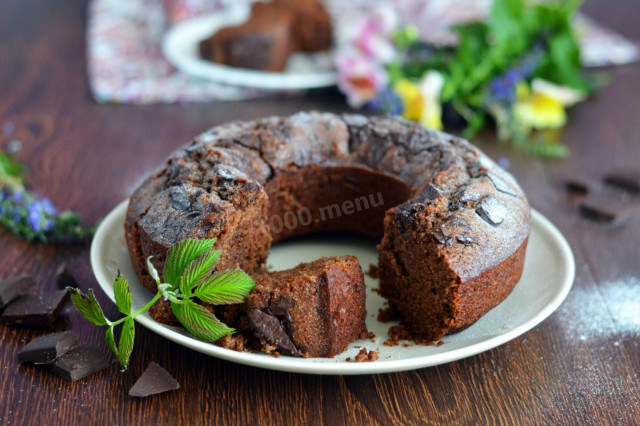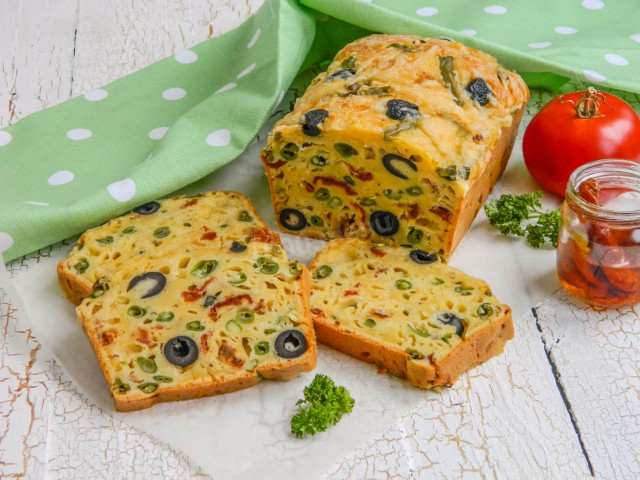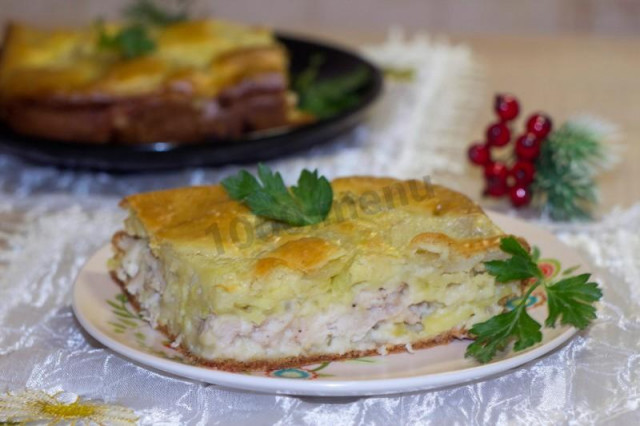Composition / ingredients
Step-by-step cooking
Step 1:
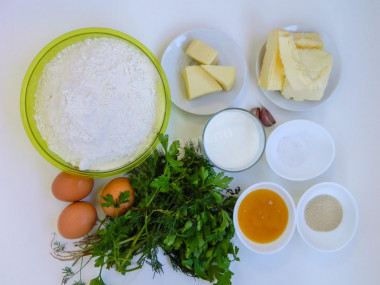
How to bake bread pigtail with garlic and herbs? Prepare all the necessary ingredients. Take the flour of the highest grade, eggs - C1 or C0. Eggs and butter 1-1.5 hours before cooking, remove from the refrigerator. In order for the dough to be successful, the egg should be at room temperature, and the butter should become soft. From the greens I took everything I had at home - parsley, dill and thyme.
Step 2:
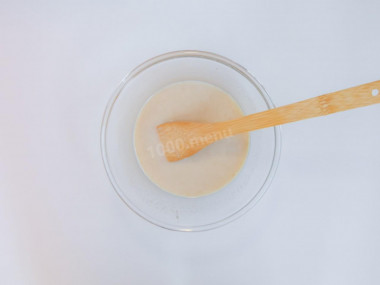
Start by making dough dough. Heat the milk to a temperature of 37-40 degrees. Dissolve honey in it and add yeast. If there is no cooking thermometer, determine the temperature in the following way: drop a drop of water on the inside of your wrist. If the feeling is neutral, then the temperature is correct.
Step 3:
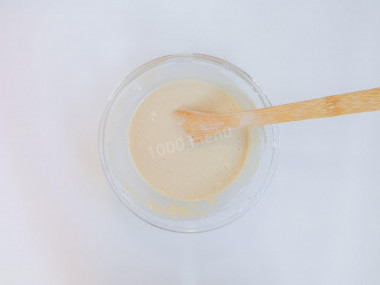
Add 3-4 tablespoons of sifted flour and mix until smooth. Cover with a towel and leave for 30-40 minutes in a warm place. Sift all the flour used in order to separate the small debris, saturate it with oxygen and the dough came out more lush.
Step 4:

While the sourdough is being prepared, take care of the filling. Remove the flaccid leaves and hard stems from the greens, rinse and dry. Peel and wash the garlic.
Step 5:

Chop with a knife. The smaller the greens are, the neater the filling will look. Take a deep filling bowl. Transfer the chopped greens and half of the amount of oil specified in the recipe there. Grate the cheese and garlic on a fine grater to make the filling more homogeneous.
Step 6:
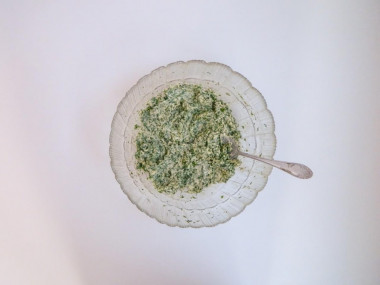
Add 0.5 teaspoons of salt and mix thoroughly until smooth.
Step 7:
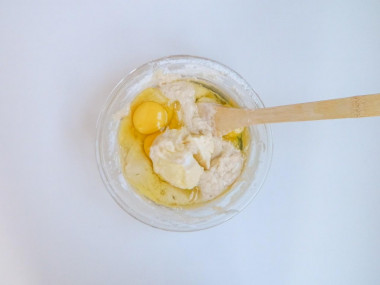
When an air cap appeared on the sponge, that is, the yeast became active, you can continue working with the dough. Wash the eggs with soap. Add salt, eggs and butter to the dough. Mix everything well.
Step 8:

To knead the dough, take a deep bowl. Sift half of the remaining flour into a bowl, make a depression in the middle and pour the sourdough into it. Stir with a spoon until smooth.
Step 9:
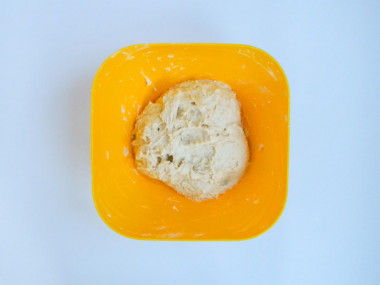
The properties of flour of the same grade, but different manufacturers may differ. Therefore, to get the desired consistency, add the remaining flour in small portions. When it becomes difficult to knead with a spoon, start doing it with your hands. Knead the dough thoroughly for at least 10 minutes.
Step 10:
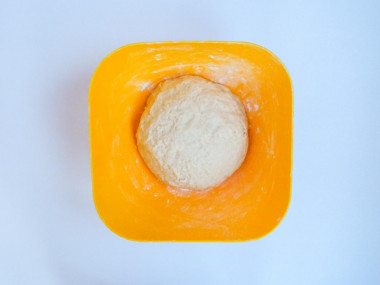
The dough should be soft, tender and slightly stick to your hands. Form a ball of dough, cover the bowl with a napkin or towel so that it does not dry and rises well. Leave in a warm place for about 1.5-2 hours. The time depends on the properties of yeast, honey and the conditions in which the dough will be located.
Step 11:
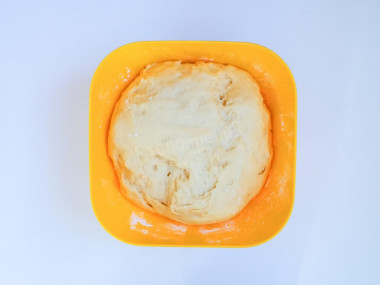
When the dough has increased 1.5-2 times in volume, it is ready and you can start working with it.
Step 12:

2 loaves are obtained from the specified quantity. Divide the dough into 2 equal parts. Roll out the dough on a work surface sprinkled with flour into a rectangular layer 0.5-0.7 cm thick. Sprinkle your hands and rolling pin with flour so that the dough does not stick.
Step 13:
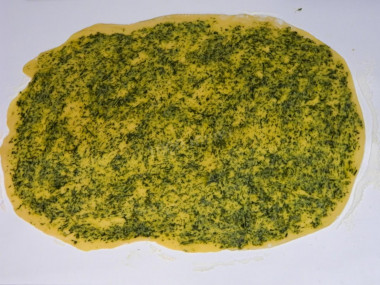
Spread the dough evenly with half of the filling.
Step 14:
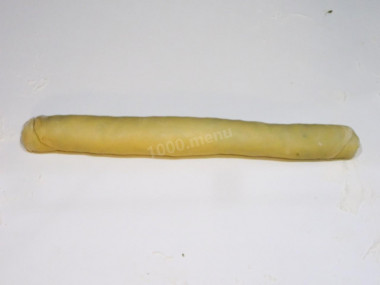
Roll the dough into a roll and pinch at the edges and along the seam so that the dough does not diverge.
Step 15:
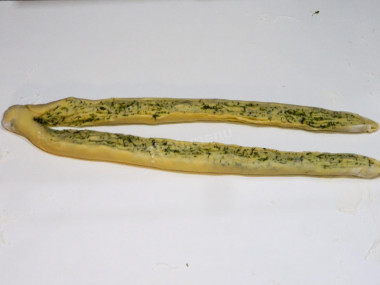
With a sharp large knife, carefully cut the resulting roll lengthwise, leaving one end intact. Turn the dough filling up.
Step 16:

Twist the two halves of the dough together, forming a pigtail. At the same time, the filling should remain on top. At the end of the pigtail, pinch the two ends of the dough.
Step 17:
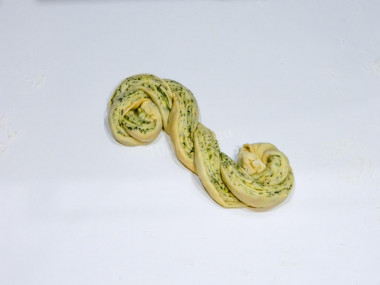
Spiral (or snake) the dough around one end. And fold the second end in the same way to get a symmetrical shape. Roll both ends until the dough is finished.
Step 18:
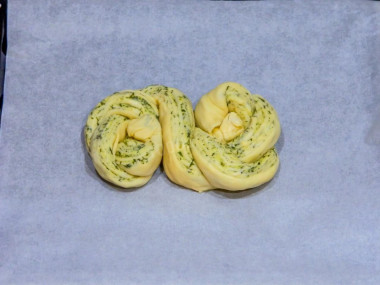
Carefully transfer the formed bread to a baking sheet covered with parchment. If the parchment is not non-stick, grease it with oil so that the bread does not stick to the surface. Make another loaf from the second part of the dough. Cover with a towel and leave to rise in a warm place for about an hour. Preheat the oven to 180 degrees. When the bread rises, send the baking sheet to the oven. Bake for 25-30 minutes on the top-bottom mode.
The exact time depends on the capabilities of your oven. The finished bread will increase in volume and acquire a golden color.
The liquid in which yeast is bred should be pleasant to the touch, no higher than 40 degrees. Why is this important? In a warm environment, yeast is well activated, in a hot one it will die, and in a cold one it simply will not work. To avoid unpleasant surprises, check the yeast before mixing with the rest of the ingredients. Pour a little warm milk into a bowl, stir in the yeast. Cover the bowl with a kitchen towel and put it in a warm place without drafts for 10-15 minutes. During this time, a foam yeast cap should appear on the surface of the sponge. If this did not happen, then the fermentation process has not started (the yeast is overdue or spoiled). In this case, it is worth taking other yeast, otherwise baking will not work.
Be prepared for the fact that you may need more or less flour than indicated in the recipe. Focus not on the amount of flour, but on the desired consistency of the dough. To avoid mistakes, read about flour and its properties!
So that the oven has time to heat up to the desired temperature, turn it on in advance (10-20 minutes before the start of cooking).
Calorie content of the products possible in the dish
- Whole cow's milk - 68 kcal/100g
- Milk 3.5% fat content - 64 kcal/100g
- Milk 3.2% fat content - 60 kcal/100g
- Milk 1.5% fat content - 47 kcal/100g
- Concentrated milk 7.5% fat content - 140 kcal/100g
- Milk 2.5% fat content - 54 kcal/100g
- Chicken egg - 157 kcal/100g
- Egg white - 45 kcal/100g
- Egg powder - 542 kcal/100g
- Egg yolk - 352 kcal/100g
- Ostrich egg - 118 kcal/100g
- Honey - 400 kcal/100g
- Dutch cheese - 352 kcal/100g
- Swiss cheese - 335 kcal/100g
- Russian cheese - 366 kcal/100g
- Kostroma cheese - 345 kcal/100g
- Yaroslavsky cheese - 361 kcal/100g
- Altai cheese 50% fat content - 356 kcal/100g
- Soviet cheese - 400 kcal/100g
- Cheese "steppe" - 362 kcal/100g
- Cheese "uglichsky" - 347 kcal/100g
- Poshekhonsky cheese - 350 kcal/100g
- Lambert cheese - 377 kcal/100g
- Appnzeller cheese with 50% fat content - 400 kcal/100g
- Chester cheese with 50% fat content - 363 kcal/100g
- Edamer cheese with 40% fat content - 340 kcal/100g
- Cheese with mushrooms of 50% fat content - 395 kcal/100g
- Emmental cheese with 45% fat content - 420 kcal/100g
- Gouda cheese with 45% fat content - 356 kcal/100g
- Aiadeus cheese - 364 kcal/100g
- Dom blanc cheese (semi-hard) - 360 kcal/100g
- Lo spalmino cheese - 61 kcal/100g
- Cheese "etorki" (sheep, hard) - 401 kcal/100g
- White cheese - 100 kcal/100g
- Fat yellow cheese - 260 kcal/100g
- Altai cheese - 355 kcal/100g
- Kaunas cheese - 355 kcal/100g
- Latvian cheese - 316 kcal/100g
- Limburger cheese - 327 kcal/100g
- Lithuanian cheese - 250 kcal/100g
- Lake cheese - 350 kcal/100g
- Gruyere cheese - 396 kcal/100g
- Garlic - 143 kcal/100g
- Butter 82% - 734 kcal/100g
- Amateur unsalted butter - 709 kcal/100g
- Unsalted peasant butter - 661 kcal/100g
- Peasant salted butter - 652 kcal/100g
- Melted butter - 869 kcal/100g
- Salt - 0 kcal/100g
- Wheat flour - 325 kcal/100g
- Fresh frozen soup greens in a package - 41 kcal/100g
- Greenery - 41 kcal/100g
- Dry yeast - 410 kcal/100g


